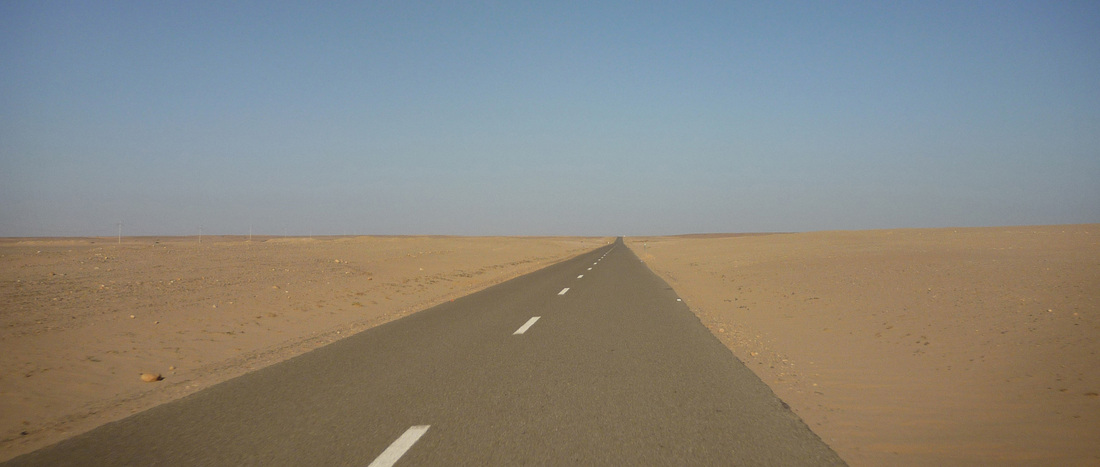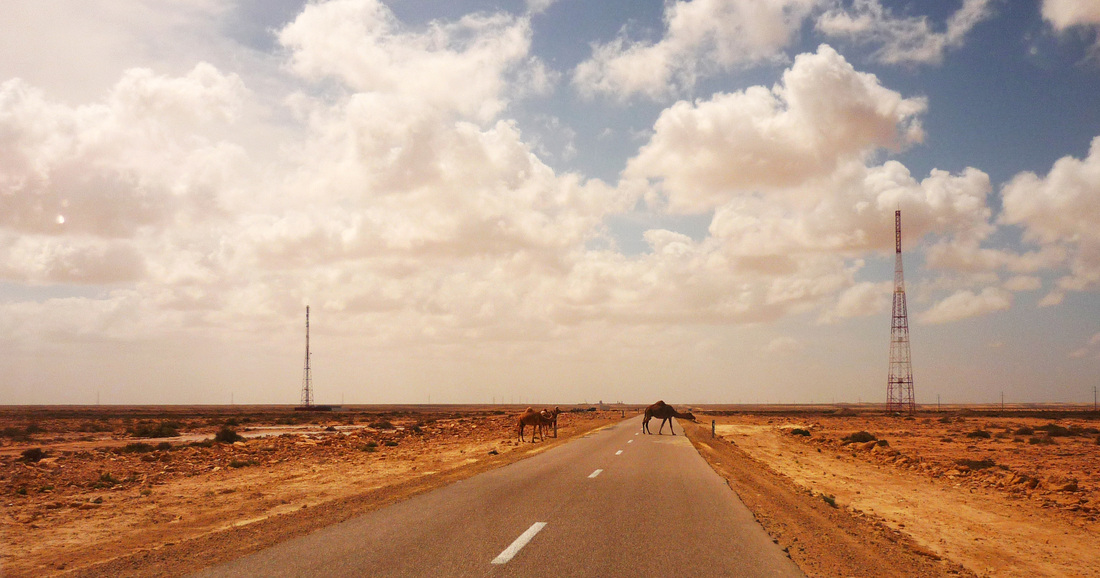|
Glance at a map of Morocco and your eyes are drawn from the mountains, deserts and cities of the north to a stretch of land in the southwest; few roads and habitations and tentatively separated from the rest of Morocco with a faint dotted line. This is Western Sahara. Few tourists venture this far south, whispers amongst the campervan masses were that it’s “all the same” and “there’s nothing there”. But there is beauty in bleak and barren; 360° of arresting, monotonous landscape stretching as far as the eye can see in every direction. Standing surrounded by such a huge expanse of ‘nothingness’ creates a humbling feeling of being such a small dot on a huge planet. In a place where camels outnumber cars you feel as if you have the whole vastness to yourself. Historically, this area of the coastal Sahara was controlled by the Spanish but by the late sixties pressure from the native Saharans, the Saharawi tribes, had increased. In 1973 a campaign for independence was initiated by a newly-formed militant group ‘Polisario’. Spain reluctantly pulled out of Western Sahara in 1976, facilitating a division of the territory between Morocco in the North and Mauritania in the South. Polisario fought on, thousands of Saharawi’s fled to neighbouring Algeria and eventually Mauritania withdrew and the Moroccans occupied 80% of the area, forcing Polisario to retreat to marginal areas in the East. Polisario directed a guerrilla war against Moroccan forces until 1991 when the UN negotiated a ceasefire with the aim of allowing Saharawis the choice between independence or Moroccan rule. This referendum never happened due to voting eligibility problems, Morocco dug it’s heels in deep and refused to compromise; subsequent talks of a referendum have failed with increasing concern over human right’s issues in the territory. Approximately half of the Saharawis still live in refugee camps just across the border in Algeria. We visited the capital Laayoune, coastal towns of Boujdour and Tarfaya, venturing as far south as Dahkla then inland to the dusty desert town of Smara. Morocco has encouraged migration of people from the North to these areas through tax-free incentives and a lowering of the cost of fuel by around 30%. The huge amounts of money desperately pumped into the region by Morocco is evident; unnecessarily grand entrances to towns with several lanes of new tarmac, ornate street lights and ostentatious gateways displaying giant painted Ostriches, Camels and Gazelle. Urban infrastructure has been rapidly constructed, suburban road systems, electricity and water but no houses and empty streets. The red Moroccan flag with its central green star flies defiantly over every official building. Information from the region is fiercely controlled by Morocco; we were frequently stopped at police checkpoints and questioned about our occupations (journalists are not allowed in the region), where we had come from and were going; they closely monitor the whereabouts of all tourists. The UN and the military had a strong presence wherever we travelled. Despite international pressure, the future for the Saharawi people looks unpromising; the question as to why the situation continues could be answered by the rich natural resources under the surface of both the land and sea. Offshore coastal waters team with abundant fisheries; the area is one of the worlds largest producers of Sardines and fleets of hundreds of fishing boats tirelessly unload tonnes of fish from Saharan ports every day. The land is phosphate rich (75% of the worlds phosphate reserves are in Morocco and Western Sahara); we saw huge conveyor belts transporting phosphates from desert mines to waiting ships. Despite no legal claim to the territory, in 2001, Morocco gave coastal oil exploration rights to France and the US.
Western Sahara glaringly lacked one thing; its people. We found no evidence of their culture or heritage; no Saharawi restaurants or craft shops, no local music playing, native dress or traditions. A land in limbo, polluted by indiscriminate landmines and devoid of its people; a country whose future is currently as bleak as it’s landscape. Emma
2 Comments
Steve
22/4/2013 07:34:38 pm
Interesting post guys.
Reply
Anne Smart
23/4/2013 05:25:43 am
Well written by non- journalist folk.
Reply
Your comment will be posted after it is approved.
Leave a Reply. |
Archives
July 2020
Categories
All
|
Proudly powered by Weebly




 RSS Feed
RSS Feed